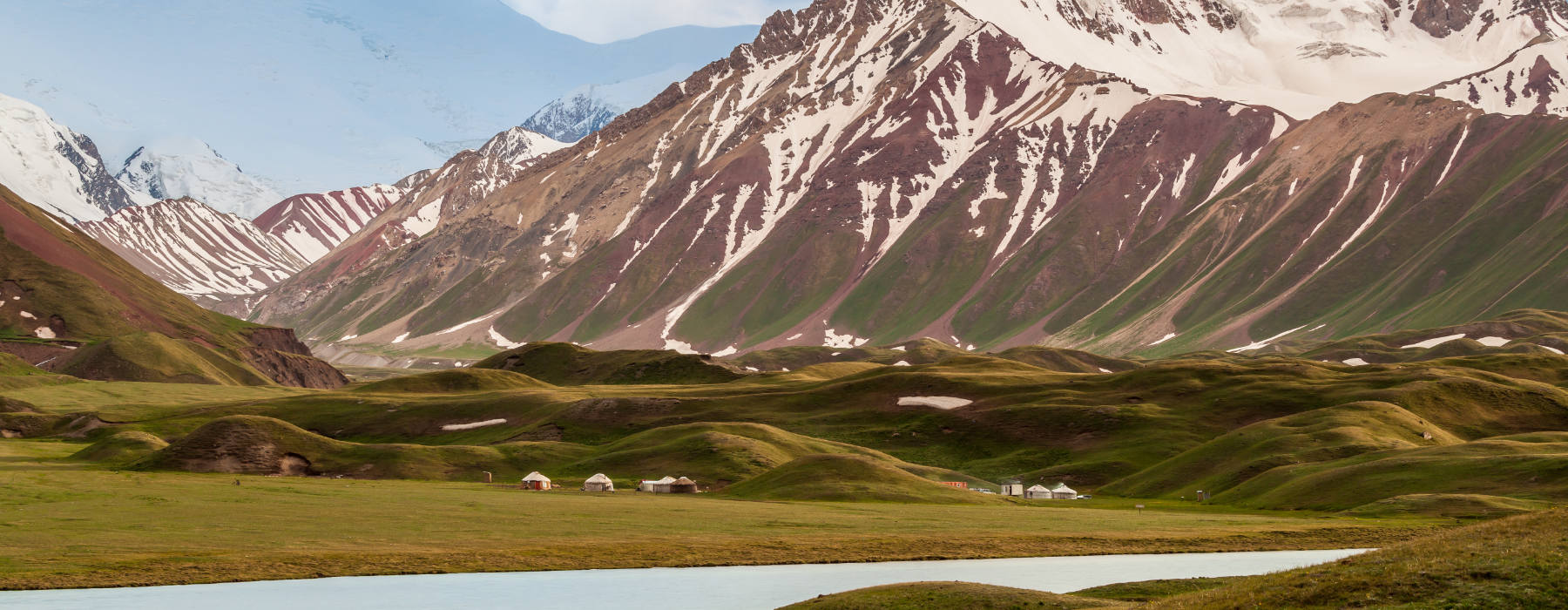January
February
March
April
May
June
July
August
September
October
November
December
With freezing winters and warm summers on the cards, the best time to visit Kyrgyzstan might seem like a no-brainer. The summer months of June, July and August are undoubtedly the best times for trekking and outdoor activities, especially in the country’s mountainous areas which are cooler than elsewhere. However, Kyrgyzstan is becoming increasingly popular for ski holidays, and so of course, winter comes into its own. April, May and June are usually the wettest months, but rainfall is fairly low throughout the country, so this shouldn’t put too much of a dampener on things (see what we did there?). To help you decide the best season for your trip, we’ve detailed the country’s weather by area below.
Fergana Valley
The Fergana Valley is the warmest region in the country, home to Kyrgyzstan’s oldest city, Osh. The valley lies partly in Uzbekistan and partly in Tajikistan, and has an average temperature in the hottest month of July of around 27°C. However, summer temperatures can reach the low 40s, so if you’re sensitive to the heat, it’s a good idea to plan a trip for spring or autumn instead. Although temperatures are milder here than elsewhere in Kyrgyzstan, it can still drop below freezing in the winter, particularly the coldest month of January.
Chüy Region
Home to the country’s capital, Kyrgyzstan’s Chüy region is located in the north and has a continental climate. In Bishkek (the capital), winters can be as cold as -8°C, and summers that can climb over 30°C. In general, the best months for travelling to the Chüy region are June, July and August, when the weather is hot and Bishkek’s bazaars are at their most lively. This is also a great time to experience the region’s countryside, such as in Chon Kemin National Park. Temperatures start to warm up significantly in March, so by early May daytime temperatures can reach a pleasant 20°C in Bishkek, and there are fewer tourists in Chon Kemin. Rainfall peaks in April and May, but remains relatively low at an average of around 1.4 inches (for comparison, the UK’s average rainfall in May is around 2.8 inches). There are also several ski resorts located here, so if you’re interested in taking to the slopes, the best time to visit Kyrgyzstan and its Chüy region is between December and March.
Naryn and Son Kul
The Naryn region is by far the coldest in Kyrgyzstan, with an average high temperature of just 11°C, and temperatures in winter months sometimes dropping to -20°C. This region is where you’ll find the beautiful Son Kul lake, along with scenic roads, wildflower-filled meadows and snow-capped mountains. Because of the extreme weather, most yurt camps won’t open until June, and even then you should prepare for cold nights and cool days of around 11°C. This region also encompasses some of the Tien Shan mountains, which span the border between Kyrgyzstan and north-western China. These mountains are home to spectacular wildlife and truly heavenly views (their Chinese name is in fact ‘celestial mountains’), but because of the freezing temperatures, only July and August are warm enough for outdoor endeavours.
Issyk-Kul Region
Located in the eastern part of the country, this region generally has less extreme temperatures than elsewhere in Kyrgyzstan. Home to the largest lake in the country and one of the largest mountain lakes in the world, it’s a wonderful region for hiking, sunset cruises and gazing at the spectacular scenery. Issyk-Kul lake freezes over in winter, so if you’re planning to swim, visit in the hottest months of July and August. Autumn and spring are great seasons for admiring the lake and its surroundings, and have the advantage of being less busy than summer, but prepare for cooler temperatures between 5 and 15°C in the day, and -5 and 7°C at night. If winter sports are your thing, Karakol – one of the country’s most popular ski resorts – is also located in this region, offering 12.5 miles of ski slopes.



